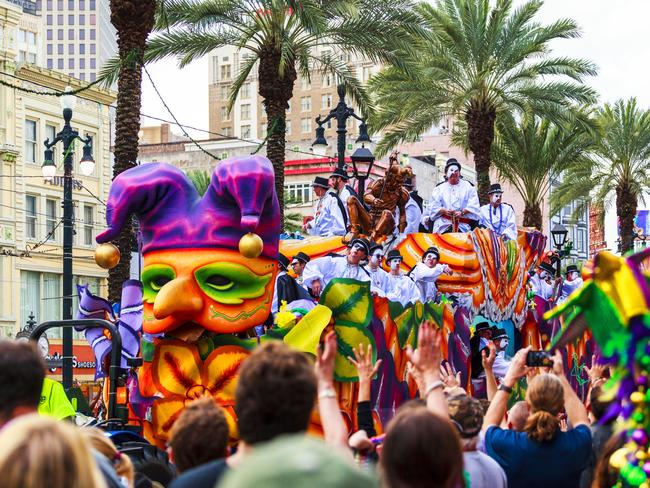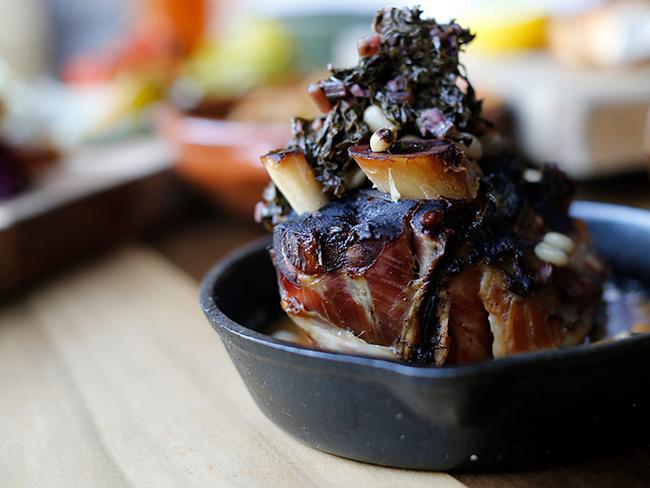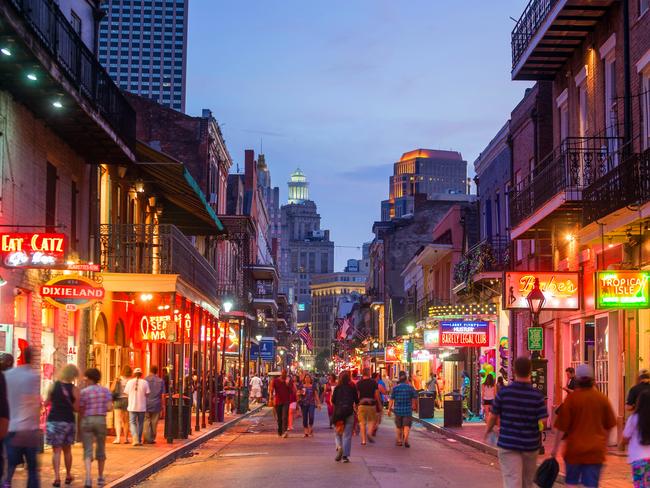New Orleans: When to visit, what to see, where to eat
IT was all but wiped out by a devastating hurricane 12 years ago, but this city has bounced back bigger and better than ever.

FILLED with festivals, food and that intoxicating southern hospitality, the buzz of New Orleans has always been inviting. But now, 12 years on from Hurricane Katrina, the revived Crescent City is streaking ahead with its boutique hotels, trendy restaurants and famed music venues that all manage to appear modern while exuding that much-loved Big Easy charm.
When you’re ready to “Laissez les bons temps rouler!” or “Let the good times roll!”, we’ve got the answers to all your pre-travel questions.
WHAT TIME OF YEAR SHOULD I GO?
February to May is peak season thanks to sunny days, temperate weather and big events such as mardi gras and Jazz Fest. September through December is just as pleasant weather wise but more family-friendly and easier on the wallet since the city’s endless string of festivals slow down as the year wears on. Avoid July and August due to the intense heat and humidity, conditions that sees even the locals bunker down in airconditioned homes.

WHAT’S THE BEST WAY TO SEE THE CITY – FOOT, BIKE OR CAR?
When you’re exploring the French Quarter (settled by the French in 1718), on foot is your best option. Be charmed by homes and restaurants outlined with intricate wrought-iron lace work, tap your feet to brass street bands and solo buskers, then stop into century’s old bars on Bourbon St and antique stores on Royal St.
The Streetcar is a popular mode of transport for locals and tourists. Take the St Charles-bound streetcar – a 90-minute journey for a mere $1.50 – for a look-see at the city’s mega mansions. You might spy Beyoncé and Jay-Z who bought property in 2015. Download the apps for Uber and Lyft – these rideshare companies are almost always cheaper than cabs.
IS THE CITY REALLY, UM, HAUNTED?
You heard right, this is “America’s most haunted city” and has ghost, voodoo and cemetery tales aplenty. It’s worth getting your fright on and visiting one of the dozens of aboveground “cities of the dead”, or cemeteries. St Louis No. 1 is the oldest, having opened in 1789. More than 600 tombs fascinate visitors as they wander the mazelike pathways. It’s also where the tomb of “Voodoo Queen” Marie Laveau lies.

SPEAKING OF VOODOO …
Voodoo and the occult are a part of New Orleans’ DNA. The underground practice is an offshoot of African religious traditions brought to the Crescent City by slaves. Learn more at the New Orleans Historic Voodoo Museum and visit the Hex: Old World Witchery, founded by two warlocks, for psychic readings and spells.
WHAT ARE THE BEST TOURS?
Get off the grid with a swamp tour that explores the Louisiana bayous. Crocodile-infested wilderness is incredibly close to town given the city was built on swamp land. The one-hour excursion to Honey Island immerses you in wetlands where guides will meander through Spanish moss-covered trees and point out cottonmouths, gators and egrets. Learn about the ecology, how inhabitants, including humans, survive in the marshlands.
WHAT ABOUT A PLANTATION TOUR?
It’s invaluable to learn about the one-time Louisiana slave trade and the complex relationships between plantations owners and slaves, and the men and women who became emancipated. Laura Plantation takes visitors beyond the myths of the Old South and walks them in the footsteps of four generations of a Creole family – both free and enslaved. While the history is often times horrific, you’ll find beauty in the land and architecture and the influence that time has on today’s culture.
WHERE SHOULD I GO TO HEAR GREAT MUSIC?
A good start is Frenchman St where locals go to kick back to the sweet sounds of jazz, blues, reggae, funk and more. The Spotted Cat is a standing room only bar known for its unique ambience and world-class musicians. A few streets away in the Marigny district you’ll find Dragon’s Den, a two-level venue filled with colourful acts ranging from burlesque and punk to Latin.

IS NEW ORLEANS DANGEROUS?
As a tourist you’ll likely be far from the affray but there are grifters and pickpockets operating everywhere. Don’t carry anything in your back pocket, zip your handbag and don’t fall for scammers on Bourbon St pretending to be overzealous locals betting you they can guess where you bought your shoes. Walk on by. And best to not walk alone past midnight.
IS IT ALL ABOUT FRIED FOOD?
Yes and no. There is plenty of fried catfish, shrimp and oysters to soothe the soul. The classic po boy (large, well-stuffed sandwich) is a must-try, as is the gumbo. And don’t forget the beignets – fried French doughnuts to die for. But New Orleans also offers world-class fare. While the French Quarter has its share of essential dining, the Warehouse District, next to the CBD, has seen a revitalisation and empty spaces have been turned into trendy and tasty restaurants. Celebrity chefs who are turning their craft into big business are on the rise, with names like Donald Link of Peche and Cochon fame leading the way.
pecherestaurant.com, cochonrestaurant.com, gumboshop.com, coopsplace.net

NEIGHBOURHOOD WORTH EXPLORING?
The historic Treme district is a hotbed for local culture. Now known as Faubourg Treme, the area is brimming with parades and brass bands. The oldest African-American neighbourhood in the US is also home to Armstrong Park (so named for Louis Armstrong whose music continues to influence the city) where jazz is said to have had its start. Drop into the Backstreet Cultural Museum which exhibits collections of New Orleans’ African-American traditional masking and processional attire. And grab a bite at Dooky Chase Restaurant … if it’s good enough for the likes of Duke Ellington and Barak Obama you won’t be disappointed.
The Garden District offers quite the opposite appeal with its historic mansions and dining hot spots. It’s where the Americans and nouveau riche built homes when French Creoles made it clear they weren’t welcome in the French Quarter.
Ramble through the hipster haven of the Bywater, where creative characters have set up shop and home. There are dive bars, barbecue joints, colourful galleries and Creole cottages to explore.

WHAT’S MARDI GRAS ABOUT?
The pinnacle of the Crescent City’s Carnival season is an invitation to engage in elaborate pageantry and partying — you and more than a million other tourists. The month-long celebration offers a little bit of everything with dozens of parades, including kid-friendly floats up St Charles Ave and quirkier marches where participants hurl high heels into the crowd. Then there’s the mardi gras Indians regaled in the most fabulous feathered headdress who march through Treme to the beat of their own rhythm.
IS IT KID FRIENDLY?
While NOLA is mostly known for its adult entertainment, children won’t be bored. Audubon Zoo is home to all walks of nature and an animal-themed splash park. City Park is an outdoor oasis that offers activities for all the family including pedal-boat rentals, gondola rides, a century-old carousel and mini golf course. And The Creole Queen, a Paddlewheeler that cruises down the winding Mississippi, is a stroll back in time for budding history buffs.




